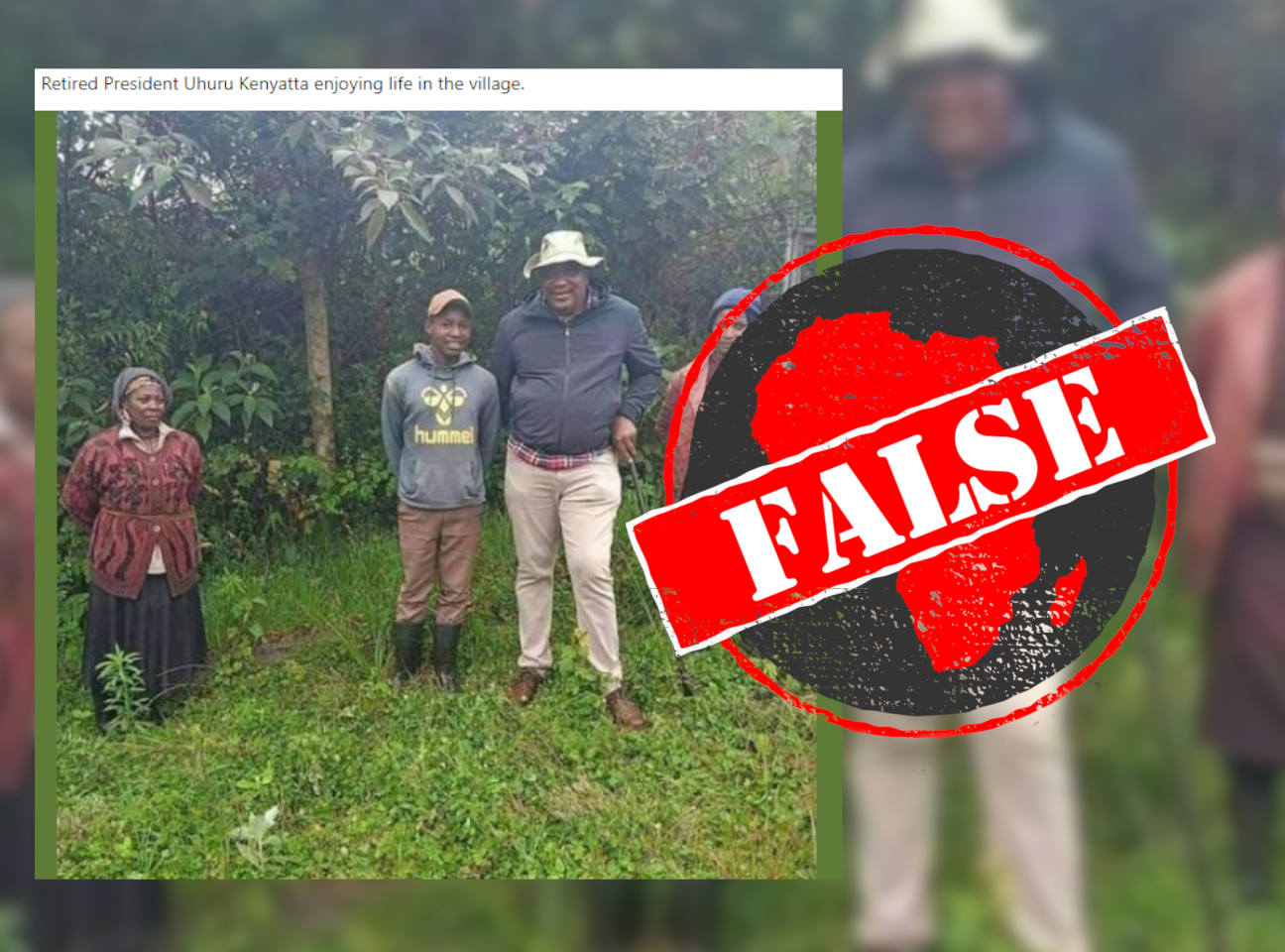IN SHORT: The photo of a smiling Uhuru Kenyatta in casual clothes was taken while he was still Kenya’s president, and not after he left office in September 2022.
Two-term Kenyan president Uhuru Kenyatta left office on 13 September 2022 with the inauguration of his successor, new president William Ruto.
Later in the month, a photo of a smiling Kenyatta in casual clothes, posing with two women and a man in a meadow with trees behind them, went viral on social media with the claim that it showed the former president in his retirement.
“Retired President Uhuru Kenyatta enjoying life in the village,” a typical Facebook caption reads.
Kenyatta comes from Ichaweri, a village in Kenya’s Kiambu county, some 40 kilometres north of the capital of Nairobi.
But does the photo really show Kenyatta “enjoying life in the village” after he left the presidency?

Photo shot during president Kenyatta’s visit to power project
A reverse image search of the photo reveals it first appeared online more than a year ago, in July 2021.
It was used in news reports about Kenyatta – then still president – visiting Kiambu’s Gakoe village to inspect the progress of a power project.
The two women in the photo later told news outlets about meeting Kenyatta.
At the time, he was still Kenya’s president. The photo doesn’t show him enjoying his retirement.
Republish our content for free
For publishers: what to do if your post is rated false
A fact-checker has rated your Facebook or Instagram post as “false”, “altered”, “partly false” or “missing context”. This could have serious consequences. What do you do?
Click on our guide for the steps you should follow.
Publishers guideAfrica Check teams up with Facebook
Africa Check is a partner in Meta's third-party fact-checking programme to help stop the spread of false information on social media.
The content we rate as “false” will be downgraded on Facebook and Instagram. This means fewer people will see it.
You can also help identify false information on Facebook. This guide explains how.


Add new comment